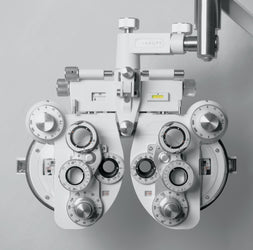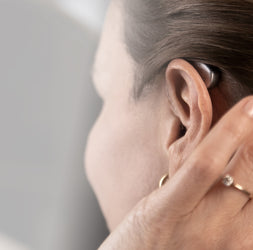What is glaucoma?
Glaucoma is the name given to a group of eye conditions which cause damage to the optic nerve at the back of the eye. The optic nerve is the ‘connecting wire’ between the eye and the brain, and damage to this vital structure can lead to a permanent loss in sight. According to the World Glaucoma Week Official website, 78 million people have glaucoma. Glaucoma is also the most common cause of irreversible blindness.Most common types of glaucoma
The most common type of glaucoma is called Primary Open-Angle Glaucoma (POAG). In this type of glaucoma, damage to the nerve is caused by raised pressure within the eye. The drainage channel of the eye appears to be wide open, yet the eye is unable to drain fluid as well and as fast as it should. In most cases, POAG does not present with symptoms or obvious signs.Another common type of glaucoma is Closed Angle Glaucoma (CAG), where there is a sudden closure of the drainage channel of the eye. As a consequence, the pressure in the eye rises very steeply and very quickly, resulting in a sudden acute damage of the optic nerve. Unlike POAG, CAG presents with signs, which include a very painful red eye and possible disturbance to one’s vision.
Glaucoma risk factors
Risk factors for developing glaucoma include:- Age – glaucoma is more common among older people
- Ethnicity – people of Afro-Caribbean heritage are at a higher risk
- Family history – if you have a first degree relative with glaucoma, you are more at risk
- Raised pressure in the eye – not all types of glaucoma are characterised by raised pressure in the eye, and not everyone with raised pressure suffers from glaucoma. However, having higher eye pressure increases the chances of developing glaucoma
- Other systemic conditions (such as diabetes)
Glaucoma symptoms
POAG is usually asymptomatic, meaning that an individual may have had glaucoma for a long time without even knowing. A problem is usually noticed only when the peripheral vision has drastically decreased, with patients realising that they can’t see out into the periphery and noticing they often bump into things.CAG develops suddenly and presents with symptoms, including intense ocular pain with an associated red eye, nausea and headache. Vision is also affected, with people seeing halos around lights and having trouble keeping objects in focus.
Glaucoma diagnosis
Regular eye tests are the best way to check your eye health. Optometrists usually carry out screening tests for glaucoma including assessment of a patient’s ocular pressure, optic nerve health, and peripheral vision. If your optometrist feels that something is looking suspicious or that there are possible signs of glaucoma, they will refer you on for further investigation.Regular eye examinations are key to the early diagnosis and, in some cases, prevention of glaucoma. We always recommend to be seen at least every 2 years. If a patient shows signs of glaucoma or falls into one of the high risk categories, they might need an eye test every year (with the possibility of sight test fees being covered by the NHS).
Early diagnosis is extremely important as glaucoma can be treated before severe permanent damage is caused to the eye.
Glaucoma treatment
Any loss in vision that occurs prior to treatment is permanent. However, treatment can prevent further sight loss. Treatment of glaucoma varies from person to person and depends on the type of glaucoma.A common type of treatment is eye drops, which are prescribed in order to lower the patient’s ocular pressure. Laser treatment and surgery are also available options. These are used to open up the blocked drainage tubes, reduce the production of fluid, or to improve the drainage of fluid.
If you suffer from glaucoma, regular eye tests become vital to monitor the condition and to ensure that treatment is effective.
Book your eye test today
When was the last time you had your eye check up? If it's been over 2 years, then it's time for you to come and see us!We are open and our practices are safe to visit. We operate by-appointment only, please get in touch with your local branch to book your visit. For detailed information on the Covid-19 safety protocols adopted in our practices you can visit this page.








